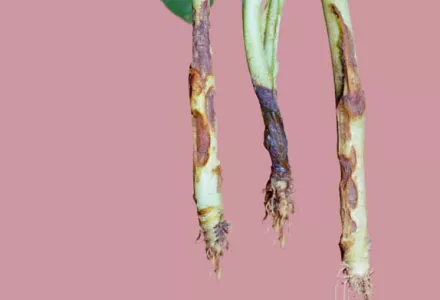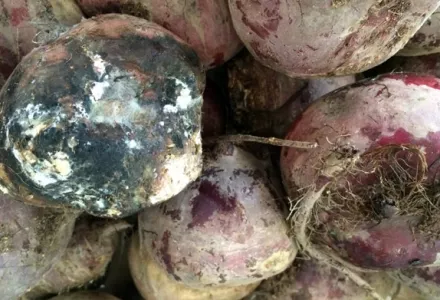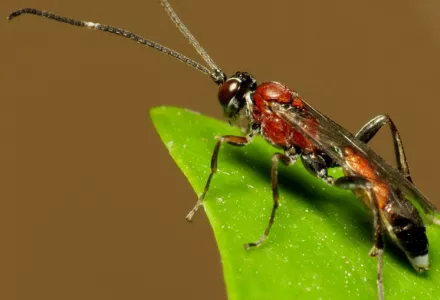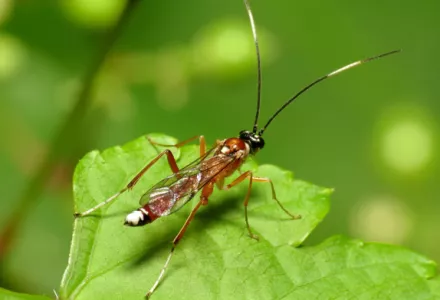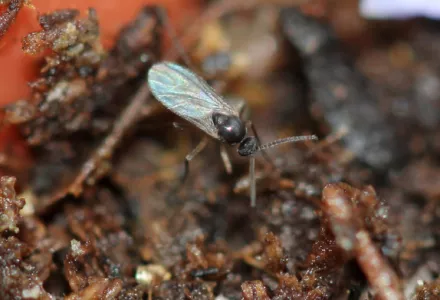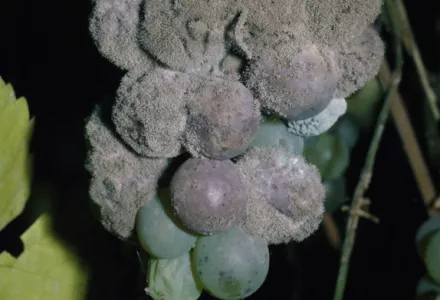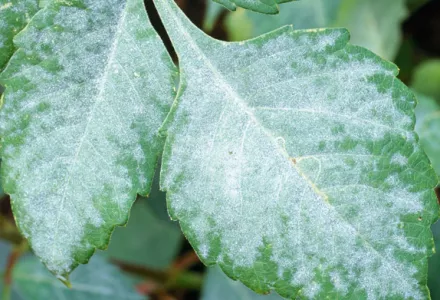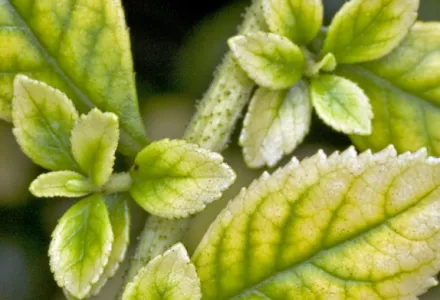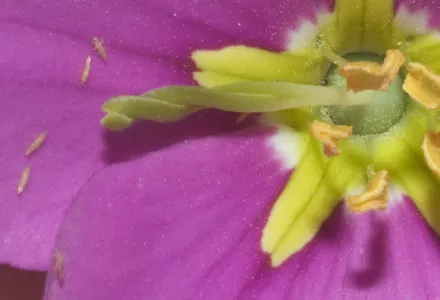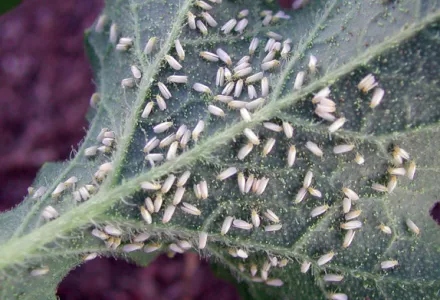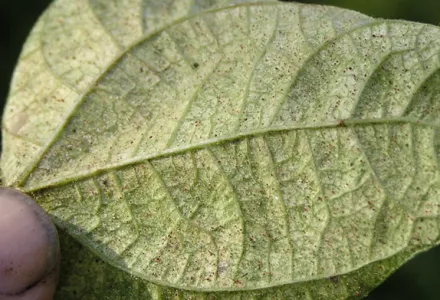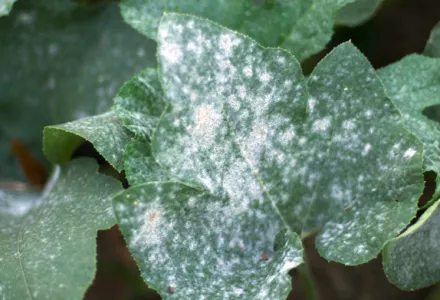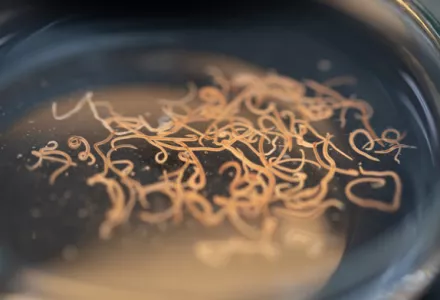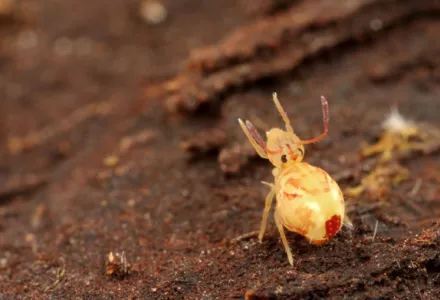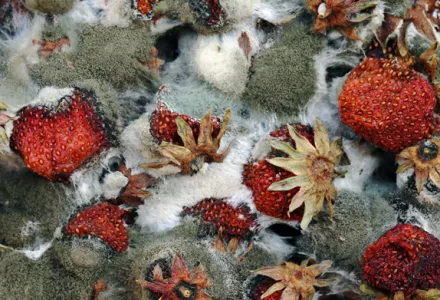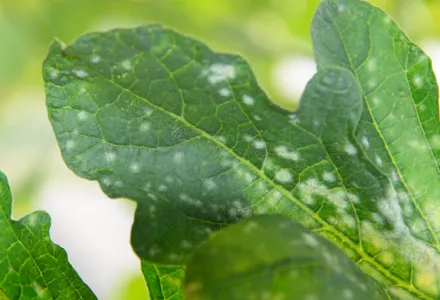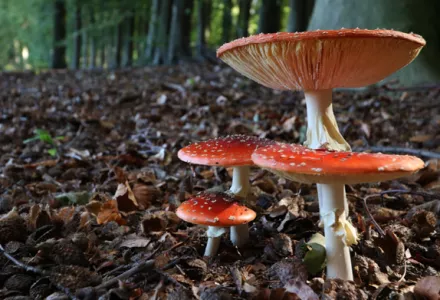Mildew is the term used for two fungi that cause this disease in hop plants, Pseudoperonospora humuli and Pseudoperonospora cannabina. Because the former is a major problem on hop plants, plenty of information is available on it; though there is hardly any literature on its development in hop in particular.
The effects of mildews
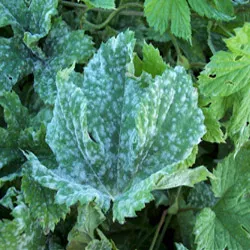
In any case, these mildews are so similar that knowing their symptoms and behaviour in hops, we can get a good picture of the effects in hop. As the disease spreads, the leaves curl up, necrotise and end up falling off. The parts of the mycelium containing the spores of this fungus emerge through the stomata of the plant. In good light it can readily be identified as a grey to purple felt on the back of the leaves.
Cold nights (around 50°F / 10°C) with very high humidity (over 85% relative humidity) provide ideal conditions for the formation of the sporangia (the structures containing the spores). Once the spores of these fungi reach the leaves, they need very high levels of humidity or even free water (rain, dew, etc.) to germinate and penetrate through the natural gaps in the leaf (lenticels and stomata). One feature of the spores of these fungi is that they have little hairs (flagella) which make them mobile; for this reason they are known as zoospores. The sporangia need free water to release the spores, which can move through water using their flagella.
As a result, this fungus occurs certain times of the year and in areas with prolonged rainfall. The spores are also scattered on the wind. Spores form by night and day, but are released during daytime. Optimal temperatures for infection are normally between 61°F and 72°F (16-22°C)
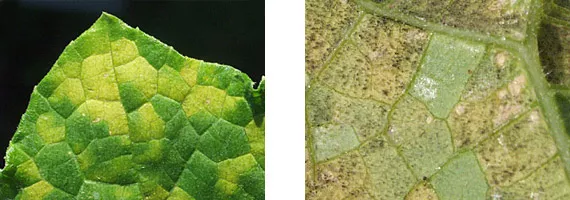
How to control mildew
Once the plant has been infected, development of the fungus is favoured by alternating day-time and night- time temperatures. The optimum daytime and night- time temperatures for development of the fungus are 77°F and 59°F (25 and 15°C) respectively.
Unlike Oidia, mildew-type fungi are affected more by copper-based preparations than sulphur-based ones. Because it spreads to the internal layers of the plant, you should try to control it using fungicides with a systemic effect, such as monopotassium phosphite.

